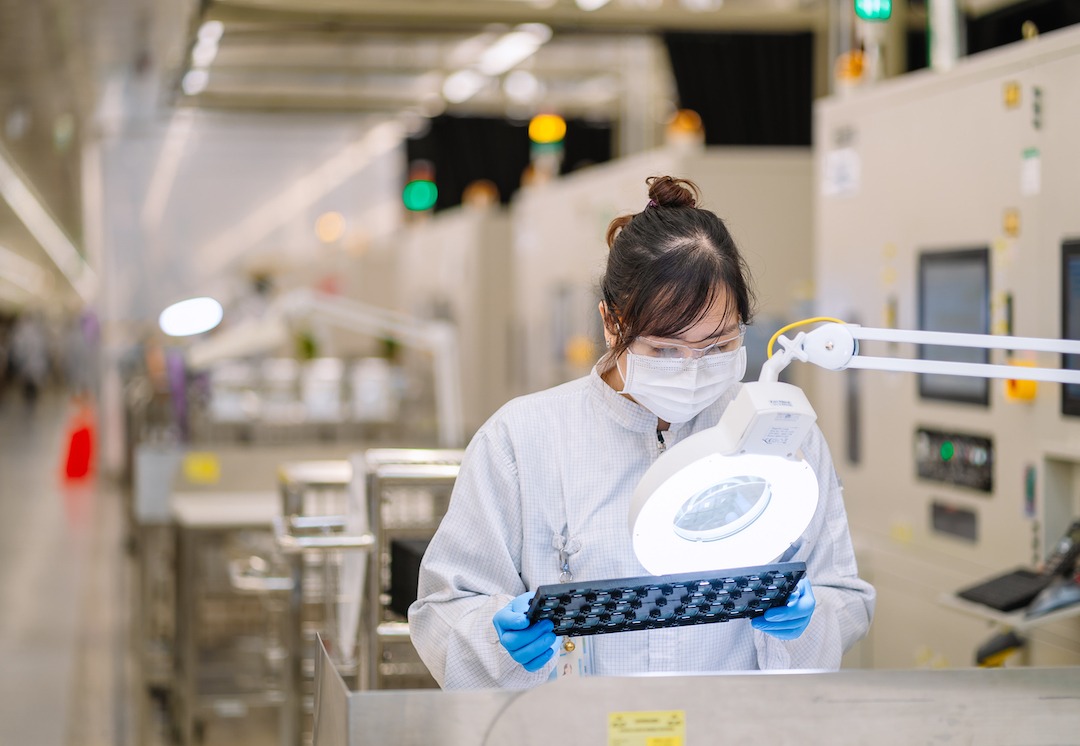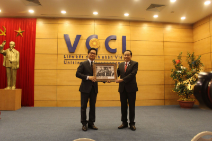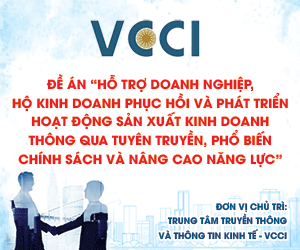Hanoi urged to master semiconductor technology, production with new initiatives
Hanoi is positioned to become Vietnam’s leading semiconductor and innovation center as experts urge the city to master chip technology, boost R&D, attract global partners and train the next generation of engineers.
Mastering technology and production will be key for Hanoi to join the global semiconductor value chain and become a hub for training and innovation, experts said at a seminar on October 22.
Prof. Dr. Tu Trung Chan, Deputy Director of the Asian Institute for Advanced Technology (AIAT), said that Vietnam must shift its mindset from chip manufacturing to mastering each microstructure layer of the integrated circuit.

The electronic semiconductor assembly and testing plant of Intel Products Vietnam Limited Liability Company. Photo courtesy of the company
“Our domestic technology capacity meets only about 50%–60% of essential requirements. Vietnam needs to advance in design, materials, packaging and testing,” he said at the seminar titled “Positioning in the Global Semiconductor Supply Chain: Criteria, Leading Powers, Vietnam’s Path and Hanoi’s Vision”.
He suggested that Hanoi take the lead in creating an Intellectual Property (IP) Bank to store, share and commercialize chip design models from research institutes, universities and enterprises.
“Intellectual property is the foundation of the semiconductor industry. Hanoi can become a source of new inventions and knowledge,” he said.
Ngo Dac Thuan, Chairman of IP Group JSC, said Vietnam should develop a national semiconductor technology map to identify capacities across each stage, from materials and design to applications.
“We should not follow the path of advanced economies but make use of our strengths: young human resources, access to open technology and a central position in Southeast Asia,” he said.
Thuan emphasized the need to promote conditional international cooperation, establish shared laboratories and integrate IP education into university programs to build a generation of creative engineers capable of mastering knowledge.
He proposed that Hanoi divide its training efforts into 30% chip design, 40% manufacturing processes and 30% packaging and testing.
Prof. Dr. Sci. Nong Duc Ke, Director of the AIAT, said that each country must secure an irreplaceable role in one or more segments of the semiconductor chain, from design and materials to packaging and testing.
He noted that Vietnam and Hanoi now have a “golden opportunity” as major corporations like Intel, TSMC, Samsung and Amkor shift production to Southeast Asia.
“The semiconductor industry demands complex technology and huge investment with tens of billions of dollars. No single locality can do it alone,” Ke said.
“To succeed, Vietnam needs a national strategy, strong investment and readiness to cooperate globally,” he added.
Ke emphasized that Hanoi holds unique advantages with its technical universities, research institutes, Hoa Lac Hi-tech Park and a dynamic innovation ecosystem.
“With proper guidance, Hanoi can become the R&D and innovation capital for Vietnam’s semiconductor industry,” he said.
According to a representative from the Viettel Semiconductor Center, the company has spent six years on chip research and design, producing 5G SIM and telecom chips now under testing.
As part of the national semiconductor strategy, Hanoi should capitalize on its strong educational base with top universities such as Hanoi University of Science and Technology, University of Engineering and Technology and FPT University. These institutions are key to developing skilled engineers for the capital and the country.
According to Tran Anh Tuan, Director of the Hanoi Department of Science and Technology, mastering core technologies, especially in semiconductors and chip design, will be crucial to drive high-value growth and accelerate Hanoi’s next development phase.
“This process requires close consultation and collaboration among experts, scientists and businesses,” he said.
Hanoi’s direction toward innovation and leadership
With strong advantages and strategic potential, Hanoi plays a vital role in Vietnam’s semiconductor roadmap and is well-placed to become a regional center for semiconductor talent.
The Hoa Lac Hi-tech Park will anchor this ambition, serving as a hub for assembly, packaging and testing (APT) while attracting high-tech investment. Hanoi aims to transform Hoa Lac into Vietnam’s “Silicon Valley,” focusing on semiconductor APT, AI research and IoT chip design for smart agriculture.
By 2030, the park expects total investment of US$10 billion, with 30% from foreign semiconductor enterprises.
Hanoi’s universities train about 5,000 STEM students annually. The National Center for IC Design, Fabrication and Testing under the Vietnam National University plans to train 10,000 engineers by 2030 specializing in chip design and manufacturing.
Ke, AIAT Director, noted that many university programs still fall short of global semiconductor training standards. “The first step is to build a qualified teaching and research workforce in semiconductors.”
Ke proposed that Hanoi introduce special policies to attract 500-1,000 semiconductor experts, engineers and talents to work in the city.
Thuan of IP Group JSC said Hanoi should focus on developing human resources, IP rights, product incubation and technology transfer to build a complete semiconductor ecosystem.
He urged the city to encourage creative thinking in R&D and IP management, while strengthening supporting industries by attracting both foreign and domestic enterprises into the global semiconductor supply chain.

Truong Viet Dung, Vice Chairman of the Hanoi People’s Committee, speaks at the seminar. Photo: Hanoimoi Newspaper
Speaking at the seminar, Truong Viet Dung, Vice Chairman of the Hanoi People’s Committee, said that the city has six resolutions to promote science, technology, innovation and digital transformation, confirming Hanoi’s leading role in these areas.
He added that Hanoi allocates 4% of its budget to science and technology, higher than the national average of 3%, reflecting its strong commitment.
Dung said Hanoi aims to establish two national semiconductor industrial centers and is seeking a “chief architect” to design a comprehensive development strategy covering policy, talent and infrastructure.
According to the vice chairman, Hanoi has adopted a partnership-based innovation model. Instead of building its own innovation centers, the city will connect and support private ones, integrating them into a broader ecosystem for mutual growth. This win-win approach follows successful global models such as Seoul’s innovation network and Singapore’s BLOCK71.
Dung added that Hanoi is testing a pilot “sandbox” mechanism to apply flexible and breakthrough policies outside existing regulations.
“This framework will help Hanoi accelerate progress in emerging industries, including semiconductors and strengthen its position as Vietnam’s innovation and technology leader,” he said.








